ShipCon Erasmus+ training courses give you opportunity to visit one of Europe’s trendiest city Barcelona with a wide range of original leisure options that encourage you to come again and again. Overlooking the Mediterranean Sea, and famous for Gaudí and his Art Nouveau architecture, Barcelona is hub of new trends in the world of culture, fashion and cuisine.

SHIPCON ERASMUS+ PREMISES – BARCELONA

ERASMUS+ IN BARCELONA
Barcelona is the city, seaport, and capital of Barcelona province and of Catalonia autonomous community, northeastern Spain, located 90 miles (150 km) south of the French border. It is Spain’s major Mediterranean port and commercial centre and is famed for its individuality, cultural interest, and physical beauty.
PLACES TO VISIT IN BARCELONA
-
Sagrada Familia

One of the most popular attractions in Spain is the Sagrada Família – a Catholic basilica designed by Catalan architect Antoni Gaudí, who was famous for championing the architectural style known as Catalan Modernism or Modernisme. It has been under construction for over 100 years and isn’t expected to be completed until 2026, yet the originality and grandeur of its design attract over 3 million visitors each year.
-
Park Güell
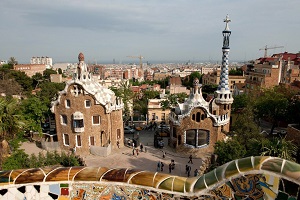
Park Güell is one of the most popular outdoor attractions in Barcelona, and yet what few people know is that it was initially conceived to be a revolutionary housing estate. Antoni Gaudí and his patron and friend Eusebi Güell originally acquired the area and began construction on a model home. When no one invested in the project, they eventually abandoned it, and it was later donated to the local council and transformed into a public park.
-
La Rambla
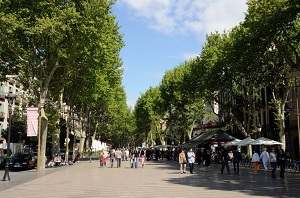 The most iconic street in Barcelona, La Rambla is a large boulevard that runs from the Plaça de Catalunya to the seafront. It originally marked the edge of the town centre during the Middle Ages before later becoming a famous street full of cafés, shops and, of course, La Boqueria food market.
The most iconic street in Barcelona, La Rambla is a large boulevard that runs from the Plaça de Catalunya to the seafront. It originally marked the edge of the town centre during the Middle Ages before later becoming a famous street full of cafés, shops and, of course, La Boqueria food market.
-
Parc de la Ciutadella
 Ciutadella Park is Barcelona’s centrally located green space, which has been a gathering point for life in the city since its creation in 1877. Indeed, when it first opened, it was only public park in the city. These days, it is home to an increasing amount of yoga groups, the Catalan Parliament and the Barcelona Zoo.
Ciutadella Park is Barcelona’s centrally located green space, which has been a gathering point for life in the city since its creation in 1877. Indeed, when it first opened, it was only public park in the city. These days, it is home to an increasing amount of yoga groups, the Catalan Parliament and the Barcelona Zoo.
-
Tibidabo Amusement Park
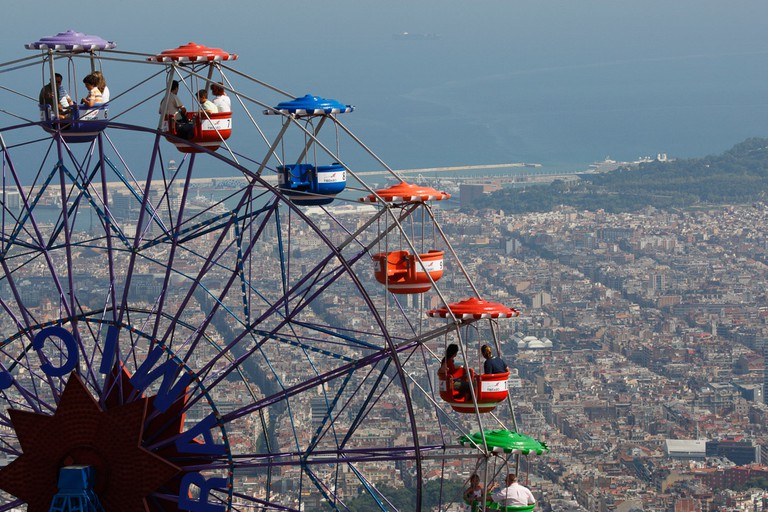 Look to the horizon from nearly anywhere in Barcelona, and you’ll be able to see the tops of Mount Tibidabo and the Temple Expiatori del Sagrat Cor neatly atop it, sitting alongside the Tibidabo Amusement Park. The oldest functioning amusement park in Spain, it has been open since 1905.
Look to the horizon from nearly anywhere in Barcelona, and you’ll be able to see the tops of Mount Tibidabo and the Temple Expiatori del Sagrat Cor neatly atop it, sitting alongside the Tibidabo Amusement Park. The oldest functioning amusement park in Spain, it has been open since 1905.
-
La Pedrera (Casa Milà)
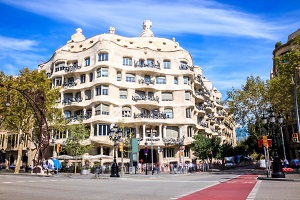
La Pedrera (1905), also known as Casa Mila, can be found at No 92 Passeig de Gràcia at the junction with Carrer Provenca. The word “Pedrera” means “Quarry” however, the original name of the house was Casa Milà. This is another masterpiece by Antoni Gaudí and was designed as a fashionable home to the wealthy Milà family. The name Pedrera was used locally to describe the building because of its stone-like appearance, and the name stuck. Its chimney-like structures rising skywards are said to have inspired George Lucas’s design of the stormtrooper helmets used in Star Wars.
-
Arc de Triomf
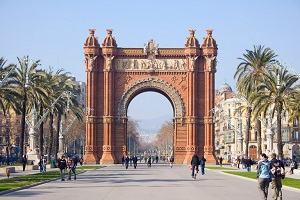 Designed by Modernist architect Josep Vilaseca i Casanovas, the Arc de Triomf is Barcelona’s answer to the eponymous triumphal arch in Paris. However, unlike its northern cousin, this arc was constructed for a very different reason – as the main access gate for the 1888 Barcelona Universal Exposition. It is a main artery of the city and the site of numerous cultural fairs, including markets and parades celebrating Chinese, Thai and Bolivian heritage, just to name a few.
Designed by Modernist architect Josep Vilaseca i Casanovas, the Arc de Triomf is Barcelona’s answer to the eponymous triumphal arch in Paris. However, unlike its northern cousin, this arc was constructed for a very different reason – as the main access gate for the 1888 Barcelona Universal Exposition. It is a main artery of the city and the site of numerous cultural fairs, including markets and parades celebrating Chinese, Thai and Bolivian heritage, just to name a few.
